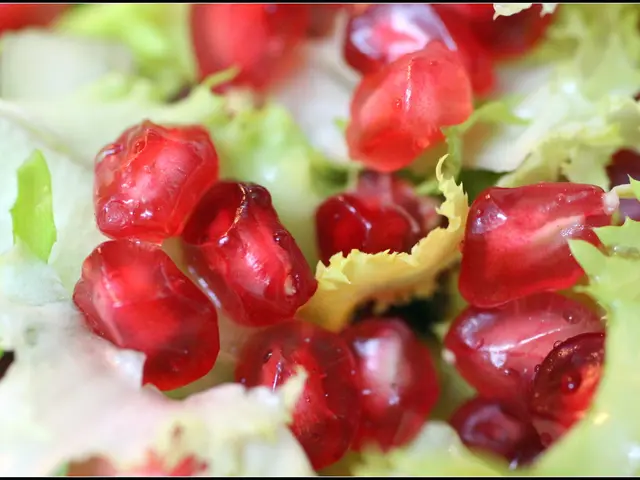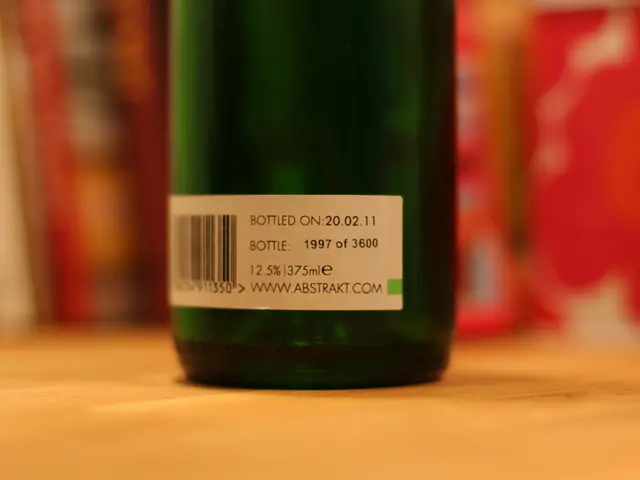Distinguishing age spots from skin cancer: Recognizing the variations
Moving the Spotlight: Age Spots, Skin Cancer, and Actinic Keratosis
Embracing the golden years comes with its own set of skin changes, one of them being age spots. But as these marks on our skin can resemble some forms of skin cancer, it's essential to recognize the differences. Let's dive into the specifics of age spots, skin cancer, and actinic keratosis.
The Lowdown on Age Spots and Skin Cancer
Both age spots and skin cancer may manifest themselves on skin areas exposed to the sun, such as the hands, face, or shoulders. However, while age spots are harmless and require no treatment, skin cancer poses a threat.
Age Spots
Age spots, also known as solar lentigines, appear as small, darker patches on the skin. They are generally flat, smooth, and devoid of itching or crustiness. These spots develop as the body produces excess melanin to shield the skin from the sun's UV rays, leading to darkening of the skin. It's worth noting that age spots are more prevalent on light skin but can occur on any skin tone. Typically, age spots make their debut from middle age onward.
Skin Cancer
On the flip side, skin cancer is a type of cancer that can be deadly if left untreated. Like age spots, skin cancer is most likely to develop on areas frequently exposed to the sun. This is due to damage caused by UV radiation from the sun or tanning beds. Skin cancer happens as a result of skin cells being damaged, causing mutations that lead to abnormal growth. Unlike age spots, skin cancer is dangerous and can metastasize to other parts of the body.
The three most common types of skin cancer are:
- Basal cell carcinoma
- Squamous cell carcinoma
- Melanoma
Another mark that might be mistaken for an age spot is actinic keratosis. This precancerous growth develops due to damage caused by UV radiation.
Age Spots vs. Skin Cancer: Making a Clear Distinction
Comparing the signs and symptoms of age spots and skin cancer can help you identify which condition is present.
Age spots
Traits of age spots are as follows:
- Flat and smooth
- Brown, yellow, or gray in color
- well-defined with clear borders
- Between a few millimeters to centimeters in size
- On sun-exposed areas, including the face, hands, shoulders, feet, arms, and back
Age spots may fade during winter and become more visible in summer.
Skin cancer
Signs of a skin growth being cancerous include:
- Asymmetrical shape
- Blurred, irregular, or ragged edges
- Changes in size, color, or shape
- Multiple colors on a single spot
- Pink, blue, purple, black, or brown coloring
- Raised, red patches
- Pale or yellow, firm patches that resemble scars
- Pain, itching, oozing, or bleeding
- Crusty or scaly patches
- Raised edges that slope down in the middle
Signs of actinic keratosis include:
- Raised, rough, or scaly patches
- Red, gray, pink, or skin-colored patches
- Flat, scaly patches resembling age spots
- Scaly, rough bumps similar to acne
- Pale or scaly patches on the lips
- Horn-like growths
Keeping an Eye out for Skin Alterations
Should you encounter anything unusual on your skin, it's crucial to consult with a healthcare professional. Early skin cancer detection can improve treatment outcomes. Seek medical advice if a mark on your skin:
- Changes in color, shape, size, or location
- Appears different from other marks on your skin
- Itches, crusts over, or bleeds and fails to heal within four weeks
Pinpointing the Problem: Diagnosis and Treatment
A doctor or dermatologist examines age spots visually during a physical evaluation, assessing their texture, placement, and appearance to detect whether they could be something other than age spots. If there's uncertainty, a skin biopsy may be conducted to test for other conditions, including skin cancer or actinic keratosis.
For those dealing with skin cancer or actinic keratosis, treatments vary depending on factors like the type and stage of cancer and an individual's unique circumstances. Treatment options may include topical therapies, radical therapy, chemotherapy, immunotherapy, or systemic medication.
When it comes to age spots, they do not require treatment since they aren't harmful. However, some individuals may opt for cosmetic treatments to minimize their appearance, such as creams, lotions, chemical peels, microdermabrasion, or laser treatments.
In conclusion, while age spots, skin cancer, and actinic keratosis share similarities, there are differences that can help you distinguish between the three conditions. If you notice any unusual changes in your skin, consult with a healthcare professional for an accurate diagnosis. Early detection and treatment are vital for ensuring optimal health outcomes.
- Age spots, like solar lentigines, manifest as small, darker patches on the skin, commonly appearing on sun-exposed areas such as the face, hands, shoulders, feet, arms, and back, and they are typically harmless.
- Skin cancer, on the other hand, is a type of cancer that can be deadly if left untreated, and it often develops on areas exposed to sun or tanning beds due to UV radiation damage.
- While age spots are flat, smooth, and devoid of itching or crustiness, skin cancer can appear asymmetrical, with irregular, blurred, or ragged edges, changes in size, color, or shape, and it can be both raised and crusty.
- In the realm of skin cancer, there are three main types: basal cell carcinoma, squamous cell carcinoma, and melanoma, while another mark often mistaken for an age spot is actinic keratosis, a precancerous growth that develops due to UV radiation damage.
- Should you encounter any unusual changes on your skin that might indicate skin cancer or actinic keratosis, such as marks that change in color, shape, size, or location, or marks that appear different from others on your skin, consult with a healthcare professional for early detection and treatment.
- As part of a health-and-wellness routine, maintaining good skin-care practices, like using sunscreen, avoiding excessive tanning, and being aware of skin conditions, is important in the prevention of skin cancer.
- In medical-conditions terminology, age spots are considered skin conditions, and they are more prevalent as we age, especially in people aged 40 and over.
- Science has made great strides in oncology and dermatology, offering numerous treatment options for skin cancer, such as topical therapies, surgery, chemotherapy, radiation therapy, immunotherapy, and targeted drugs, as well as cosmetic treatments for age spots, like creams, lotions, chemical peels, microdermabrasion, and laser treatments.







